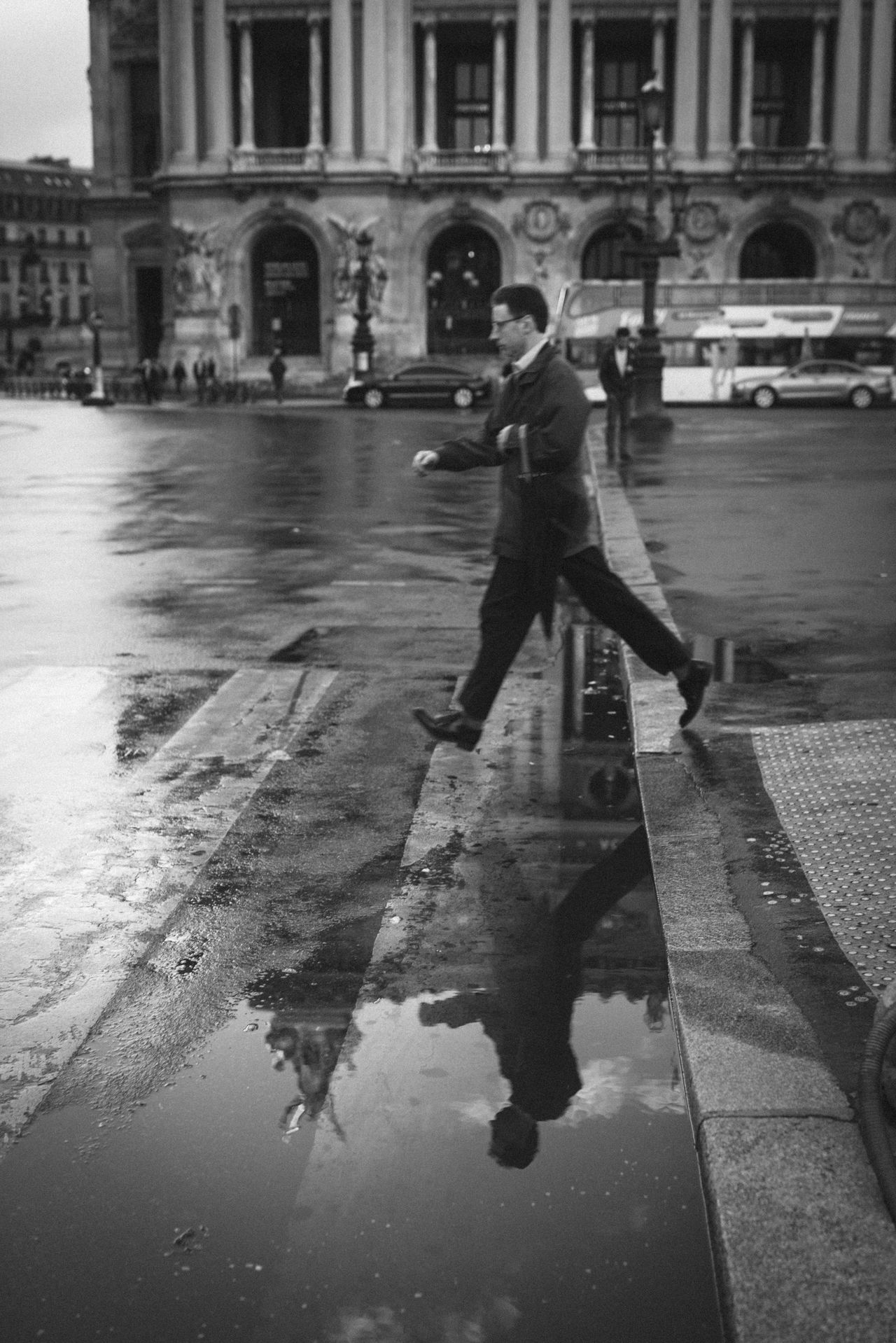Henri Carter – Bresson

Technical: The type of lighting which was used in this image is natural lighting, here this is shown as there is no glare from the street lights and where there are no buildings, light is shown on the ground. The position of the camera was held quite low down at about waist level which is shown as there is more street shown before the man than above the man, which I believe was done to shown the man’s shadow. The tonal range is widely present with the darkest point being the shadows in the building windows; and the lightest point being the suns reflection on the ground which I assume has been freshly rained on.
Visual: Here Henri Cartier – Bresson, used black and white photography, which works well due to the tonal range that has been created. Texture is shown further down in the image in the foreground, in the tarmac of the road and the bumps on the sides of the roads to help the blind. There is repetition shown in the cars showing the fact that it’s a busy day, and the man due to his reflection. The eye is being lead straight to the man and his movements, and then onto the mans reflection, here this is interesting as all though it’s the same man in the reflection due to the shadows, he looks slightly different in the image.
Contextual / Conceptual: Similar to some street photographers, Bresson tries to create images that he thinks best represents the countries he is travelling in. To do this he immerses himself in the culture that he is staying in, here he tries to become accustomed before taking his first few images.
Vivian Maier
Henri Carter – Bresson vs. Vivian Maier
- Similarities:
- Both use Black and White Photography in the majority of their photos, here this as there is “no colour” the critical elements of the image stand out and become more visible. This technique is quite powerful as the majority of people see the wold in colour therefore a black and white photo is instantly more eye-catching and different.
- The pair use outdoor lighting from the natural sunlight, this helps as they don’t need to carry around heavy equipment with them all the time and can easily capture their photo instantly.
- Tonal Range is present in both photographers works which allows a larger amount of contrast to be shown in the image.
- Both photographers share the passion of photojournalism / photo documentation; here they try and photograph the world around them and what they find interesting.
- Differences:
- Bresson doesn’t usually use peoples faces as he focuses more on their bodies and body language. This differs to Vivian Maier’s work as she utilises peoples facial expressions and interesting facial expressions.
- Maier uses spot reflections, frames & windows to include in compositions whereas Bresson focuses on the people in their environments.
- Bresson tends to take pictures at a low angle in order to capture people and what’s around them; however, Maier tends to be more creative as she takes photographs above, below, or behind the subject to capture a more interesting perspective.
- Bresson cares a lot shadows in his images and it adds more tonal range and contrast, which is different to Maier’s work as her main focus is on the people themselves.
































































